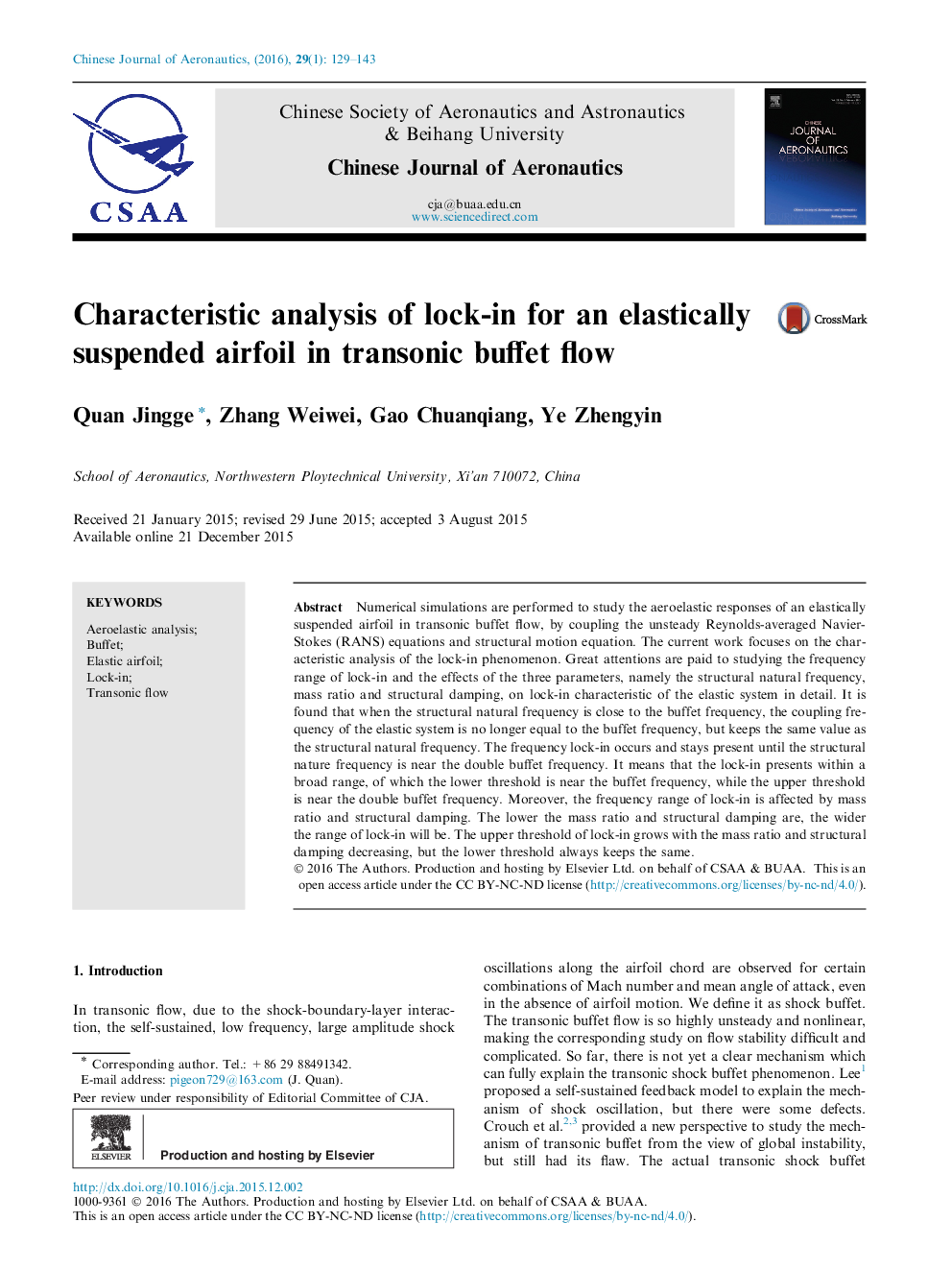| Article ID | Journal | Published Year | Pages | File Type |
|---|---|---|---|---|
| 757300 | Chinese Journal of Aeronautics | 2016 | 15 Pages |
Numerical simulations are performed to study the aeroelastic responses of an elastically suspended airfoil in transonic buffet flow, by coupling the unsteady Reynolds-averaged Navier-Stokes (RANS) equations and structural motion equation. The current work focuses on the characteristic analysis of the lock-in phenomenon. Great attentions are paid to studying the frequency range of lock-in and the effects of the three parameters, namely the structural natural frequency, mass ratio and structural damping, on lock-in characteristic of the elastic system in detail. It is found that when the structural natural frequency is close to the buffet frequency, the coupling frequency of the elastic system is no longer equal to the buffet frequency, but keeps the same value as the structural natural frequency. The frequency lock-in occurs and stays present until the structural nature frequency is near the double buffet frequency. It means that the lock-in presents within a broad range, of which the lower threshold is near the buffet frequency, while the upper threshold is near the double buffet frequency. Moreover, the frequency range of lock-in is affected by mass ratio and structural damping. The lower the mass ratio and structural damping are, the wider the range of lock-in will be. The upper threshold of lock-in grows with the mass ratio and structural damping decreasing, but the lower threshold always keeps the same.
